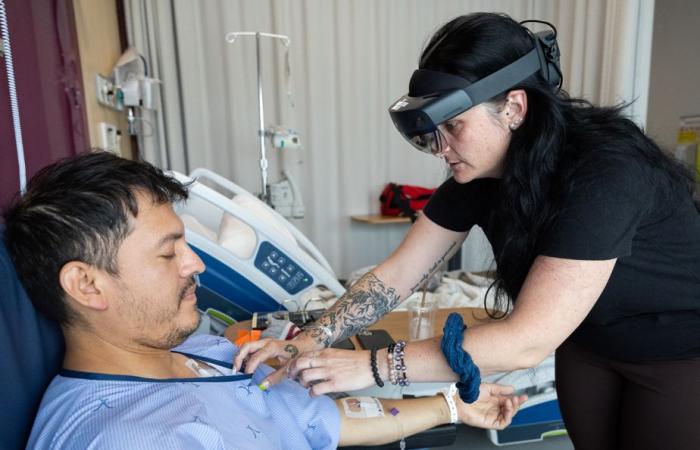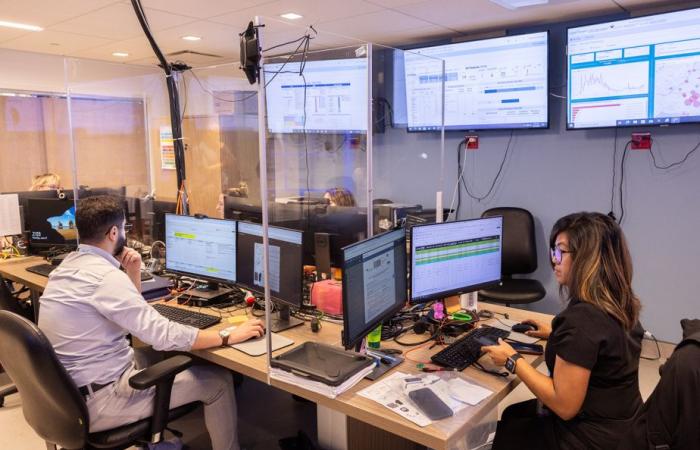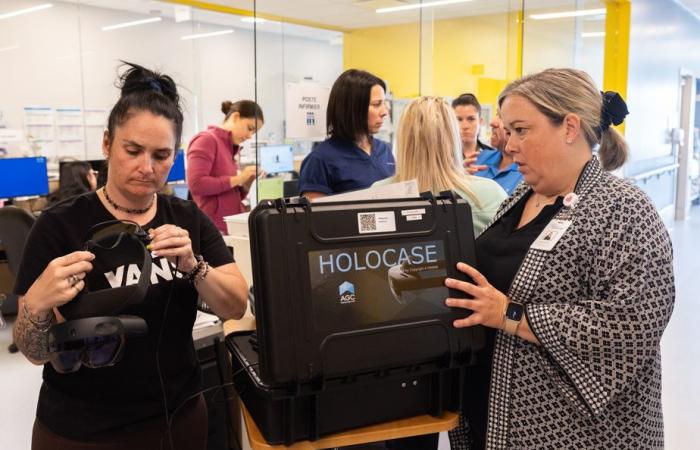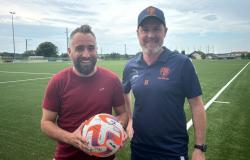“Robot nurse: that’s our new name!” » Auxiliary nurse Marie-Soleil Lévesque hardly jokes. For the past week, she’s felt like she’s starring in a science fiction movie. And to be one of the main actresses. But she has both feet firmly anchored in reality.
Posted at 5:00 a.m.
Marie-Soleil Lévesque works in the new virtual care hospital unit at the Suroît hospital, located in Salaberry-de-Valleyfield, in Montérégie. During her patient rounds, she wears an augmented reality headset. A nurse from the Jewish General Hospital in Montreal accompanies him virtually, in order to assess the patients (which an auxiliary nurse is not authorized to do). She sees everything that her colleague from Suroît observes through her lenses.
“We are with Julie, the nurse, on the phone,” explains Marie-Soleil Lévesque to a patient, seated in an armchair next to his hospital bed. “We wanted to know how things were going for you today. You don’t have any pain? No shortness of breath either? »
The nursing assistant bends down to observe the patient’s legs – “we don’t have any swelling” – then approaches the catheter. “It’s in place with the date written on it. »
PHOTO MARTIN TREMBLAY, THE PRESS
This monitoring device transmits the patient’s vital signs 24 hours a day to the Jewish General Hospital and their assigned nurse.
At the time of the passage of The Press On Monday, five patients were hospitalized in the new virtual care unit at Suroît, opened five days earlier. On their chest, a monitoring device which transmits vital signs (pulse, blood pressure, etc.) 24 hours a day to the Jewish General Hospital and their assigned nurse.
Denis Bray, 65, appreciates the virtual experience. “We end up in the hospital anyway,” says the construction contractor, who is suffering from pneumonia.
You don’t need to have a stuck-up, stuck-up nurse.
Denis Bray, patient in the new Suroît virtual care unit
Technology enthusiast, Jorge Ortiz also considers his stay in the new unit “very correct” for problems linked to Crohn’s disease.
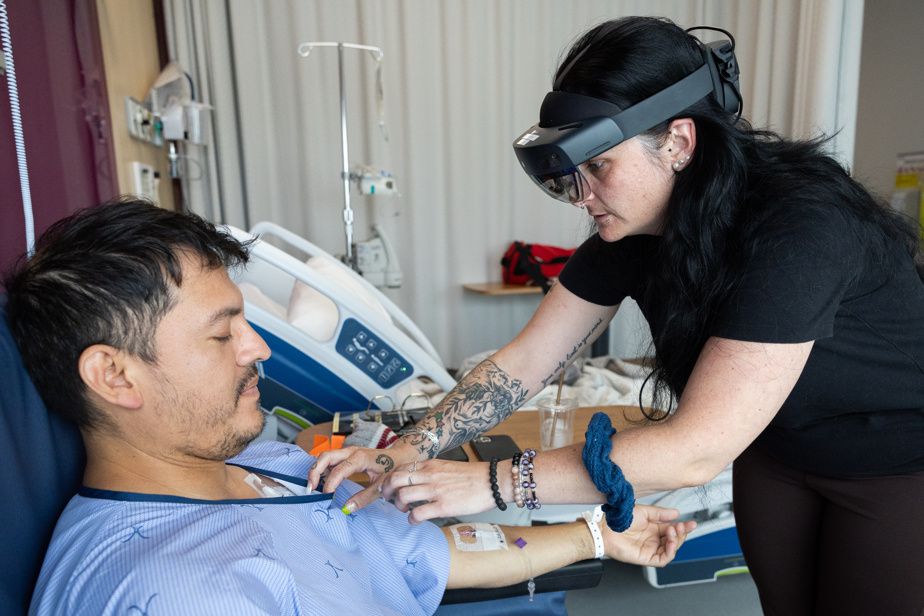
PHOTO MARTIN TREMBLAY, THE PRESS
Auxiliary nurse Marie-Soleil Lévesque at Jorge Ortiz’s bedside
Pauline Lajoie, 96, says for her part that she has difficulty hearing the nurse’s questions virtually. ” The other [l’infirmière auxiliaire] repeat what she heard and I can respond,” specifies, with a small voice, the lady with the beautiful white mane, whose condition has deteriorated recently. “They took me in hand to treat me. »
In response to a crisis
The CISSS de la Montérégie-Ouest recognizes this: the hospital virtual care unit was set up in two weeks to deal with a “crisis situation”.
Hospital beds had to be saved. Almost a month ago, 20 beds were closed at Suroît due to a lack of staff.
The shortage of nurses is even more glaring since the implementation of new rules in Quebec aimed at limiting the use of independent labor (MOI).
“In the medicine and surgery units at Suroît, 50% of the nurses on evening shifts are independent workers,” explains Nancy Malenfant, director of hospital activities. At night, we are talking about 75% of uncovered positions, therefore covered by the MOI. »
By mid-May, the CISSS de la Montérégie-Ouest had hired 80 people from placement agencies, including 49 nurses and practical nurses.
“With the virtual unit, we will be able to recover 20 beds, possibly also overcapacity beds”, estimates the Dr Mitchel Germain, head of the general medicine department and deputy director of professional services at the Suroît hospital.
The Jewish General Hospital provides the nursing staff (see other tab). A Suroît nurse, however, must go to the unit twice a day to administer intravenous antibiotics to patients, for example, an act reserved for her profession.
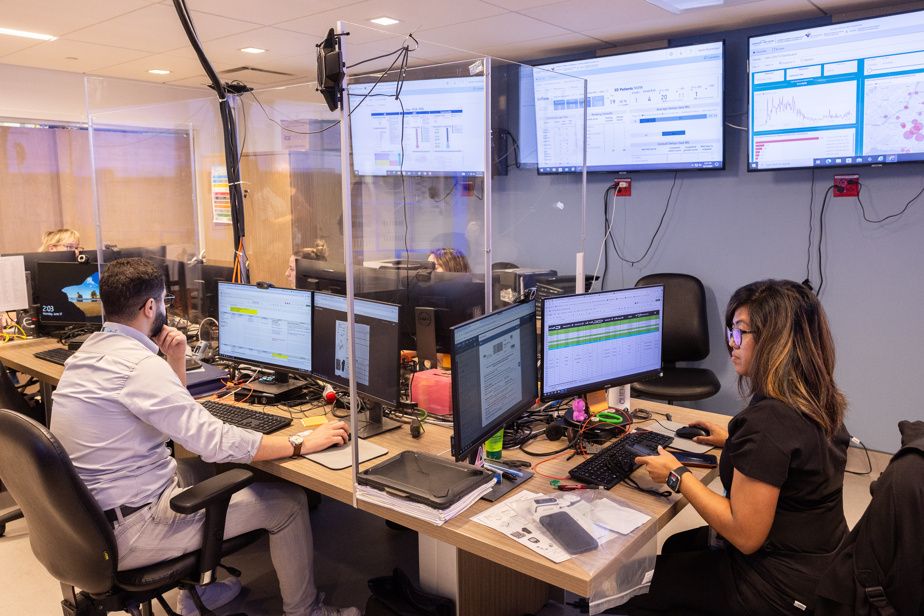
PHOTO MARTIN TREMBLAY, THE PRESS
The command center of the Jewish General Hospital, which allows remote monitoring of patients, some of whom are also part of the home hospitalization service, launched in 2022
“We had to choose models of antibiotics [donnés] every 12 hours rather than every 4 hours, indicates the Dr Germain. We consulted our specialists, our microbiologists and the pharmacy. »
Patients must be in stable condition to stay in the new unit. They also need to be able to give consent – they can refuse to go. Therefore, no cases presenting cognitive impairment or delirium.
We chose patients whose hospitalization is likely to be very short [trois ou quatre jours]who do not need intensive rehabilitation and who are able to mobilize quickly.
The Dr Mitchel Germain, head of the general medicine department and deputy director of professional services at Suroît hospital
According to the Dr Germain, these groups of patients “represent a very large majority” of patients seen in the emergency room.
A little revolution
For the staff of this Suroît unit, this is a small revolution. The hospital has moved from the era of fax machines and paper records to that of augmented reality headsets.
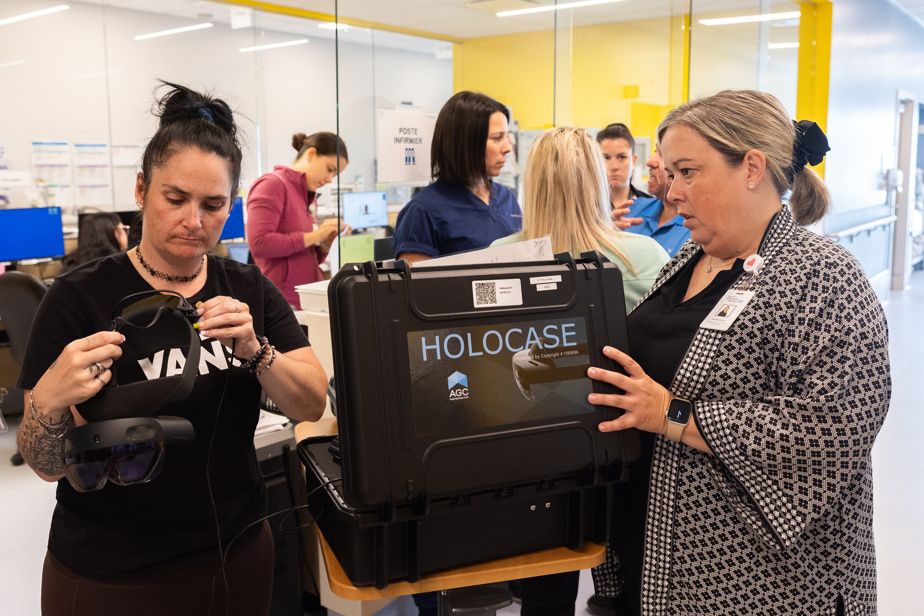
PHOTO MARTIN TREMBLAY, THE PRESS
Marie-Soleil Lévesque takes out the augmented virtual reality headset alongside the assistant director of nursing, Pamela Arnott.
Nursing assistants save time by no longer manually taking patients’ vital signs. But they must carry out their usual tasks (like giving medicine) while learning to master new technologies.
It’s a lot of change, a lot of adaptation, a lot of newness, a lot of stress. So, one day at a time.
Marie-Soleil Lévesque, auxiliary nurse
The patients are, however, “less heavy,” according to beneficiary attendant Myriam Lévesque (sister of Marie-Soleil). “We run less, we have more time to spend with them, to make them walk. » Doctors continue to make their visits in person. They communicate with the nurse by telephone.

PHOTO MARTIN TREMBLAY, THE PRESS
Sisters Myriam and Marie-Soleil Lévesque, in the virtual care unit of the Suroît hospital
The president of the Union of Healthcare Professionals of Montérégie-Ouest (FIQ-SPSMO), Mélanie Gignac, takes a “favorable view” of this initiative, but remains “vigilant”. “Patients will have to be properly chosen to go there,” she says.
The CISSS ensures that patient safety remains the priority. And the human warmth in all this? “The attendants are present, the auxiliary nurses are also present,” replies Pamela Arnott, assistant to the director of nursing. A physiotherapist or social worker can come to the patient’s bedside if necessary. “You might think that with the glasses and the screen, it takes away the human side, but at the same time, they have the human warmth of other professionals. »



